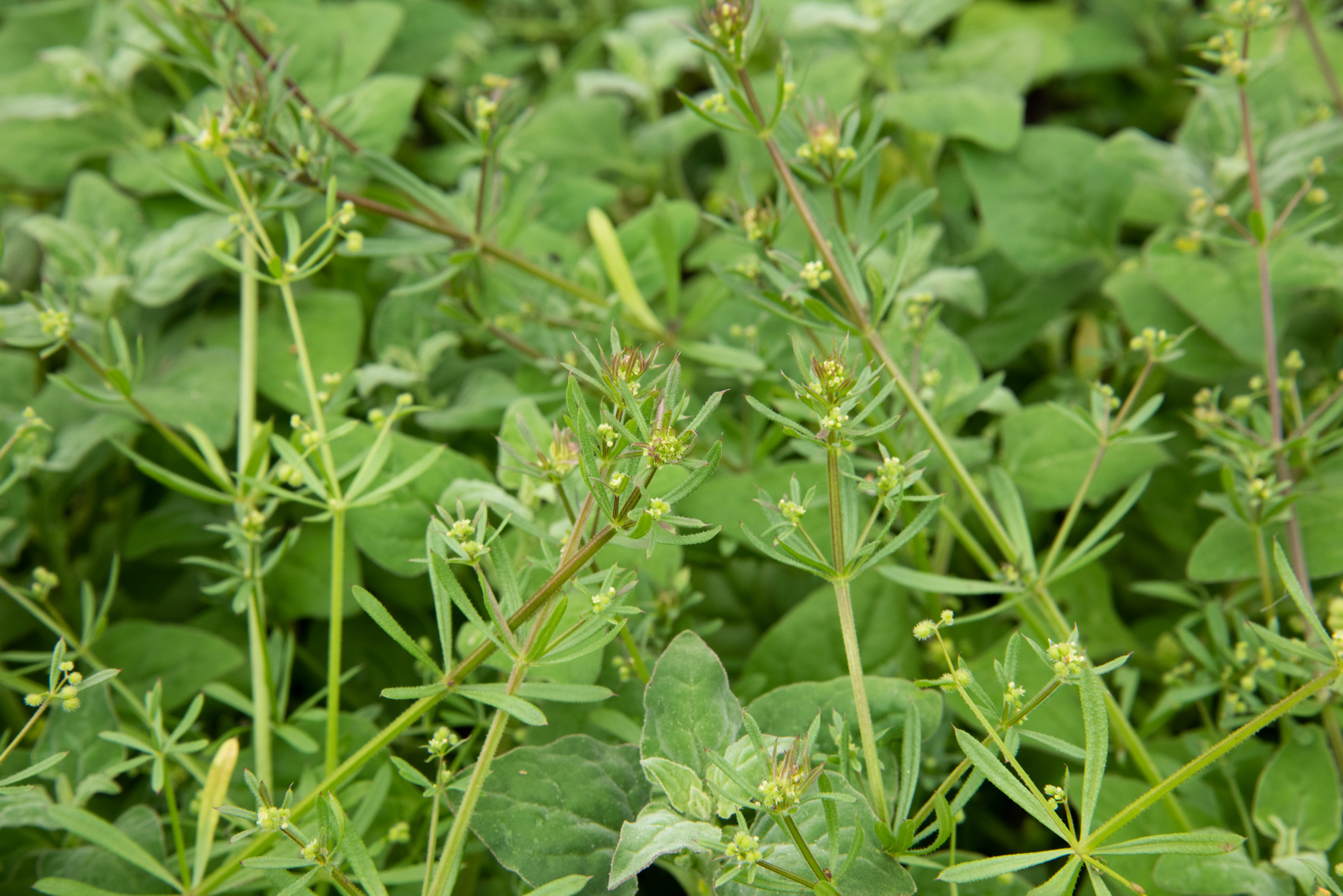Australian Plant Census (2011) available at: Vascular Plants APNI (biodiversity.org.au)
Australia's Virtual Herbarium (AVH) (2008). Council of Heads of Australian Herbaria (CHAH). Available at: Home - AVH (chah.org.au)
Ehrendorfer, F. & Schoenbeck-Temesy, E. (1980). Rubiaceae. In: Townsend, C.C., Guest, C.C. & Omar, S.A. Flora of Iraq, Vol. 4. Ministry of Agriculture & Agrarian Reform, Baghdad, Republic of Iraq.
eFlora of South Australia (2008). Electronic Flora of South Australia species Fact Sheet, Department of Environment and Heritage, S.A. Available at: Fact sheet for Galium spurium (flora.sa.gov.au)
Hall, L.M, K.M. Stromme, G.P. Horsman, and M.D. Devine. (1998). Resistance to acetolactate synthase nhibitors and quinclorac in a biotype of false cleavers (Galium spurium). Weed Science 46:390-396.
Navie S. (2004). Declared Plants of Australia. An identification and information system. Centre for Biological Information Technology: Brisbane. [CD-ROM]
National Herbarium of Victoria (2008). Records from the MELISR specimen database.
Reid, Danielle J., Van Acker, Rene C. (2005). Seed burial by tillage promotes field recruitment of false cleavers (Galium spurium) and catchweed bedstraw (Galium aparine). Weed Science 53 (5):578-585.
Stace, C. (1997). New Flora of the British Isles, 2nd edition. Cambridge University Press. Cambridge, United Kingdom.
Stajsic, V. (2008). National Herbarium of Victoria, Royal Botanic Gardens Melbourne, Birdwood Avenue, South Yarra, Victoria, personal communication.
Thompson, I.R. (2008 in prep./ms). A revision of Asperula and Galium (Rubieae: Rubiaceae) in Australia. Muelleria.
Toelken, H.R. (1986). Rubiaceae. In: Jessop, J.P. and Toelken, H.R. (eds.), Flora of South Australia, Part II. The Flora and Fauna of South Australia Handbooks Committee, South Australian Government Printing Division.
Turkington, R., Kenkel, N.C. & G.D. Krankko. 1980. The biology of Canadian weeds. 42. Stellaria media (L.) Vill. Canadian Journal of. Plant Science 60:981-992.
Van Eerd, L.L., McLean, M.D., Stephenson, G.R. and Hall, J.C. (2004). Resistance to quinclorac and ALS-inhibitor herbicides in Galium spurium is conferred by two distinct genes. Weed Research 2004 44, 355-365.
Western Australian Herbarium (1998-). FloraBase - The Western Australian Flora. Department of Environment and Conservation. Available at: Taxon Profile of Galium spurium L. | Florabase (dbca.wa.gov.au)
Zhang, W. and Bailey, K.L. (2000). Biological Control of Cleavers (Galium spurium and G. aparine) with Pathogenic Fungi - Exploration and Discovery. In: Spencer, N.R. Proceedings of the X International Symposium on Biological Control of Weeds, Montana State University, USA.
CABI. (2021). Galium aparine (cleavers). In: Invasive Species Compendium. Wallingford, UK: CAB International. Available at: Galium aparine (cleavers) | CABI Compendium (cabidigitallibrary.org)
PlantNET (2021). The NSW Plant Information Network System. Royal Botanic Gardens and Domain Trust, Sydney. Available at: PlantNET - FloraOnline (nsw.gov.au)
POWO (2019). Plants of the World Online. Facilitated by the Royal Botanic Gardens, Kew. Available at: Galium spurium L. | Plants of the World Online | Kew Science
Queensland Government (2016). Galium aparine. Weeds of Australia, Biosecurity Queensland Edition. Department of Employment, Economic Development and Innovation (DEEDI). Available at: Galium aparine (lucidcentral.org)
USDA, Agricultural Research Service, National Plant Germplasm System. (2021). Germplasm Resources Information Network (GRIN-Taxonomy). National Germplasm Resources Laboratory, Beltsville, Maryland. Available at: Simple Query Species Data GRIN-Global (pir.sa.gov.au)
VicFlora (2016). Flora of Victoria, Royal Botanic Gardens Victoria. Available at: VicFlora: Galium spurium (rbg.vic.gov.au)































